New Zealand is home to some of the rarest birds in the world. And this isn’t by accident. It might surprise you to learn that New Zealand’s biodiversity is unusual and very different from the rest of the world. And the South Island birds are some of the most unique.
As an island, birdlife ruled the land and skies and evolved without the threat of mammals walking the shores, that is, until humans arrived around 1300 AD. The only native mammals in New Zealand were two types of bats.
The first humans introduced rats and dogs into the wild here, and then later on, settlers brought in pigs, goats, deer, more rat species, cats, rabbits, mustelids (ferrets, stoats, and weasels), and possums. Since then, dozens of bird species have become extinct, and others are endangered and hanging on for dear life. In fact, a conservative estimate is that introduced mammals kill more than 25 million native birds annually. Combined with other factors like land clearance, habitat loss, food competition, and drainage, most birds face a challenging future.
But the kiwis are fighting back—both the people and the birds.
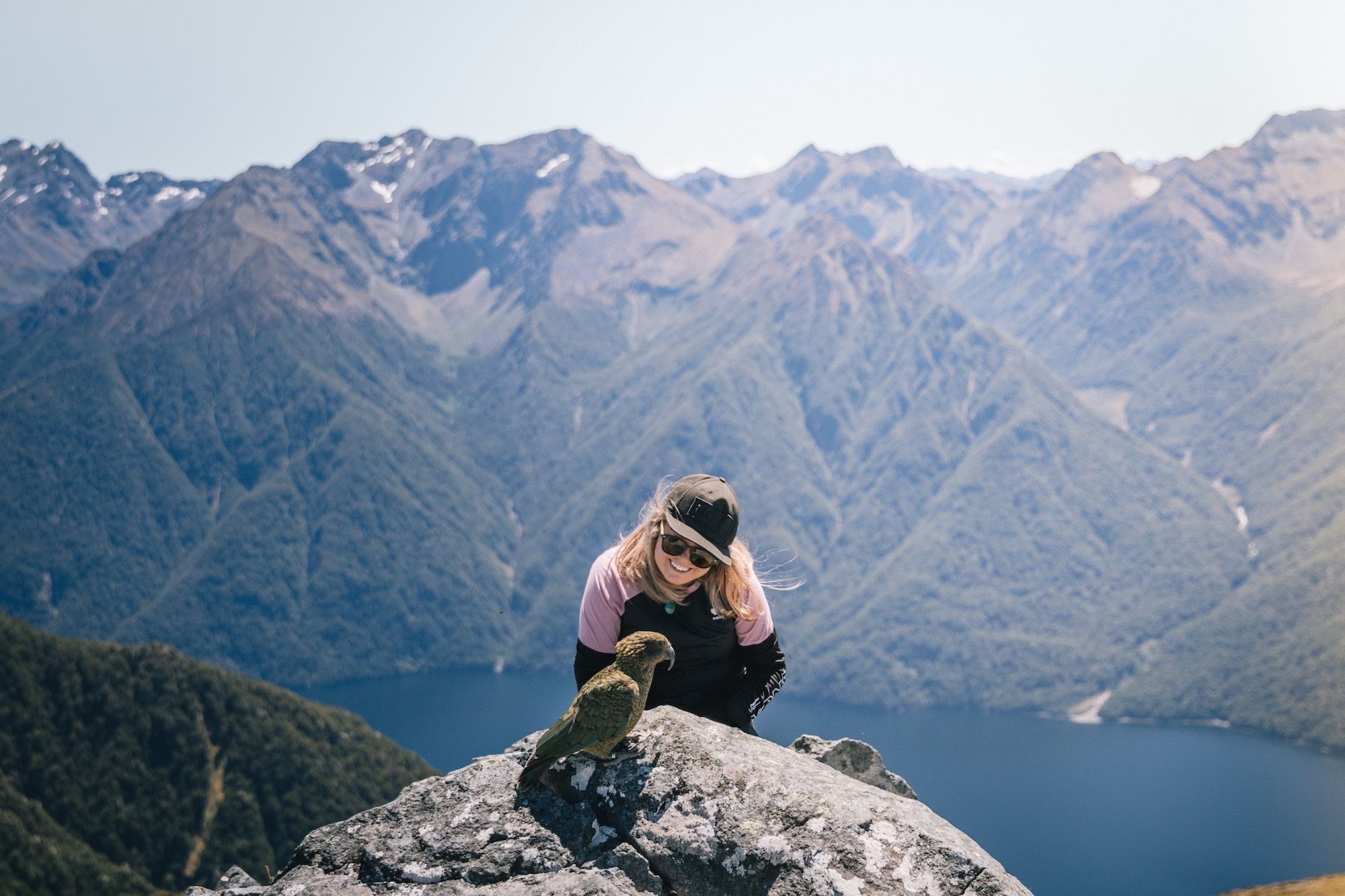
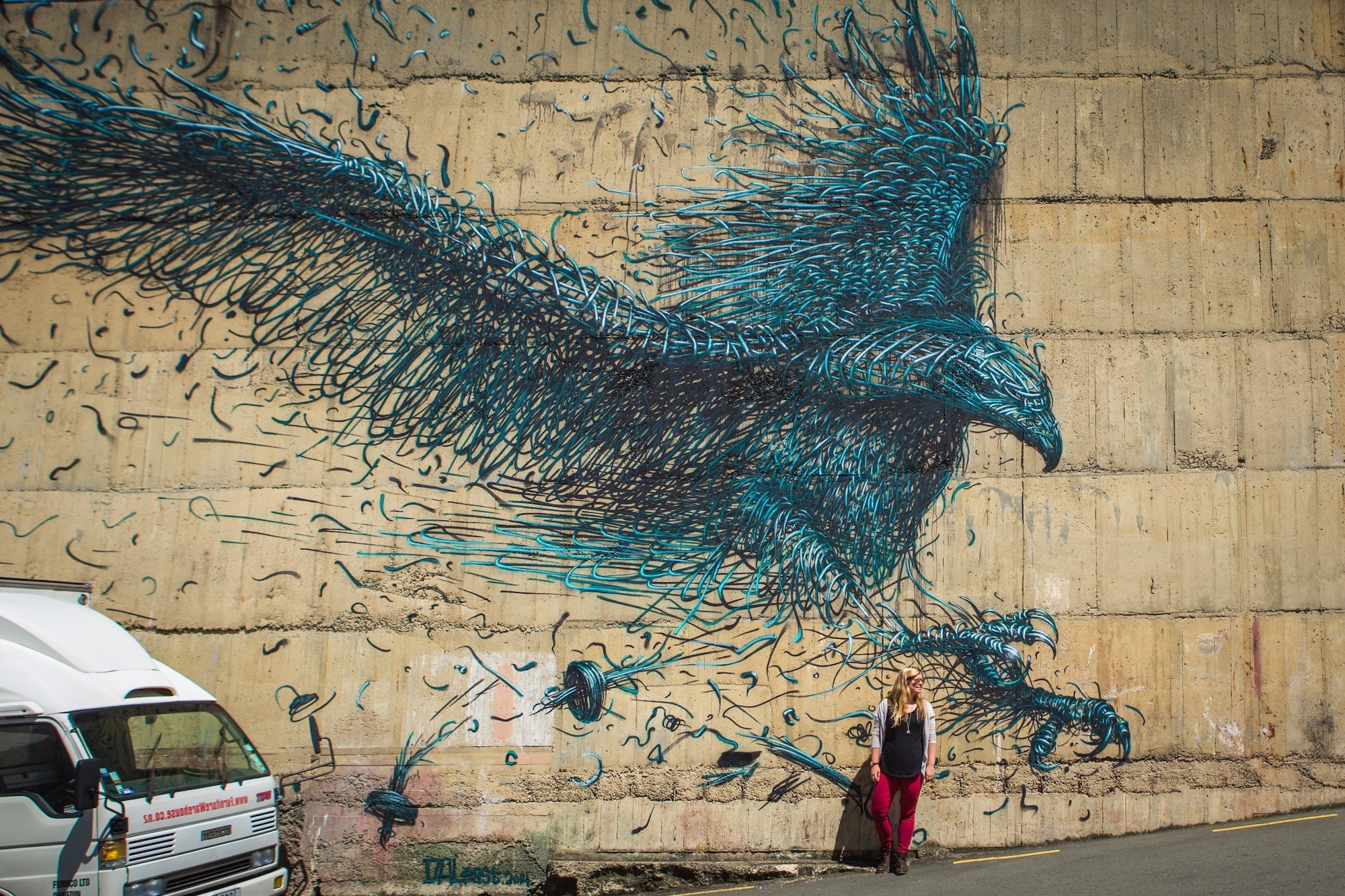
Instead of giving up and letting many more species go extinct, the Department of Conservation (DOC) in New Zealand, along with many other groups, private, public, trusts, and nonprofits, like Predator Free NZ, are working round the clock to fight the extinction on our shore. With huge efforts of predator control around the country, it gives the birds a much better chance at survival. Without it, we can pretty much kiss most of them goodbye within our lifetimes.
Protecting these rare South Island birds is important to me. If you’ve followed me for a long time, you probably have noticed how I’ve shifted my content more and more toward conservation and sustainability. I try to align myself with brands that care for the planet and its creatures.
For the past decade, along with DOC, one of my biggest supporters has been RealNZ (formerly Real Journeys). Founded by local legends Les and Olive Hutchins back in the 50s, they helped fight the good fight to save Lake Manapouri and protect Fiordland. These conservation values have long been the core of the company ever since. We think alike and see how unique our taonga (treasured) species are first-hand on the South Island in Fiordland and Rakiura (Stewart Island).
I’ve traveled all over New Zealand for the past decade and found some of the best places for meeting some of our rare and endangered South Island birds around Fiordland and Rakiura.
Get ready to meet some of my favorite South Island birds. Enjoy!
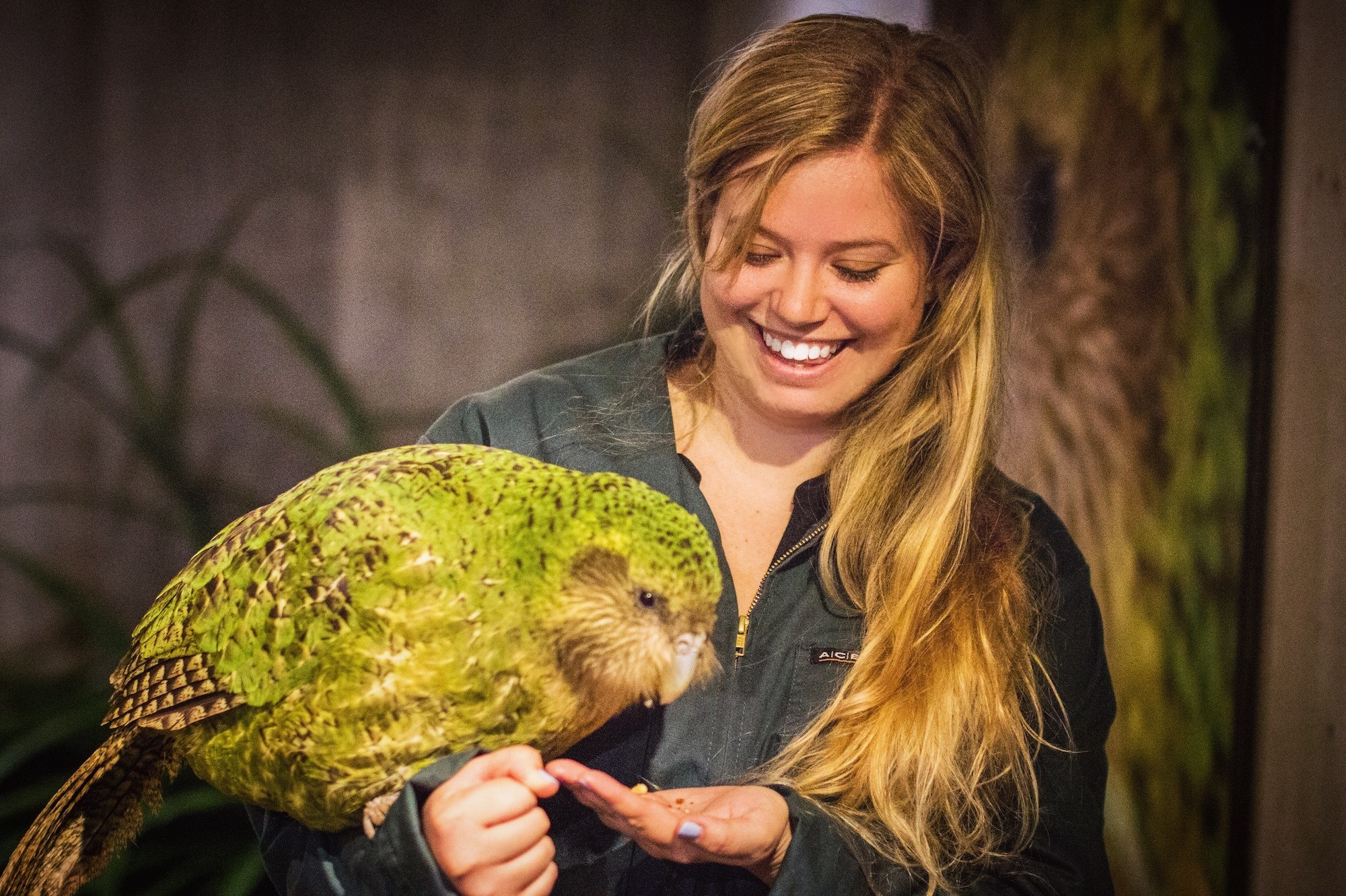
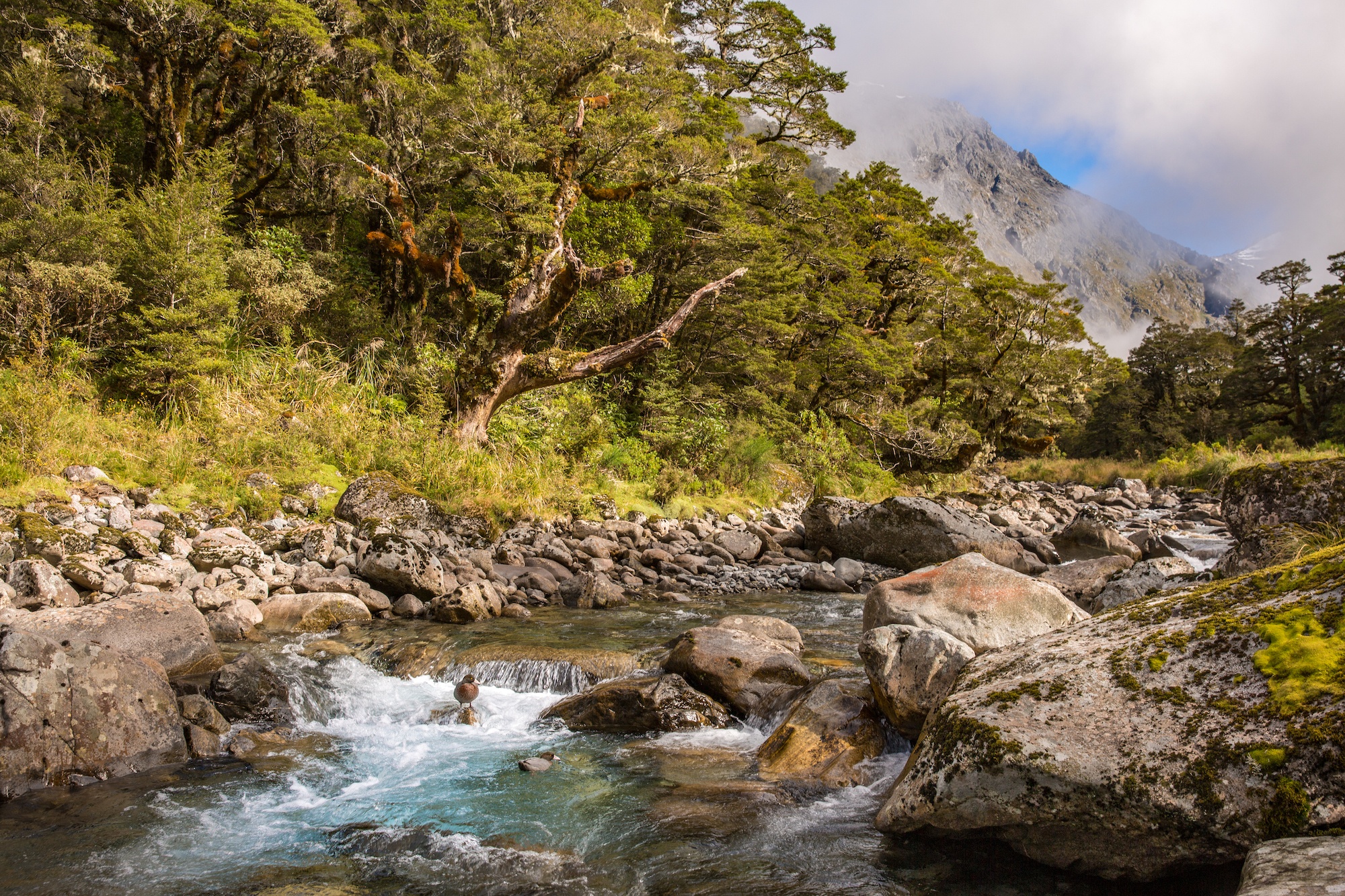
1. The cheeky Kea
The top contender for both the most loved and most despised bird in New Zealand has to be the kea. The world’s only alpine parrot is considered one of the most intelligent birds in the world, which means they often get up to no good. Farmers claimed they killed their sheep, so there was a government-sponsored bounty on their beaks for a century – killing over 150,000 kea.
Almost extinct, less than 7,000 kea are left in New Zealand, and they are nationally endangered and declining. Beautiful and cheeky, they are a fan favorite of tourists, that is, until they rip your car window rubber to pieces or destroy your tent and throw your hiking boots off a cliff. With big personalities and the most beautiful feathers, kea are special. We’re lucky to have them.
Because the populations of kea are so small now, it’s not always easy to find them. One place you can see them is along the Milford Road in Fiordland. They love hanging out by the Homer Tunnel and at some of the pullover spots. If you take a day trip to Milford Sound with the bus transfer from Queenstown or Te Anau with RealNZ, they stop at these places, and you can see them up close and personal.
But remember, NEVER FEED THE KEA. As we say here, a fed kea is a dead kea. Feeding kea is bad for many reasons – you can read more here.
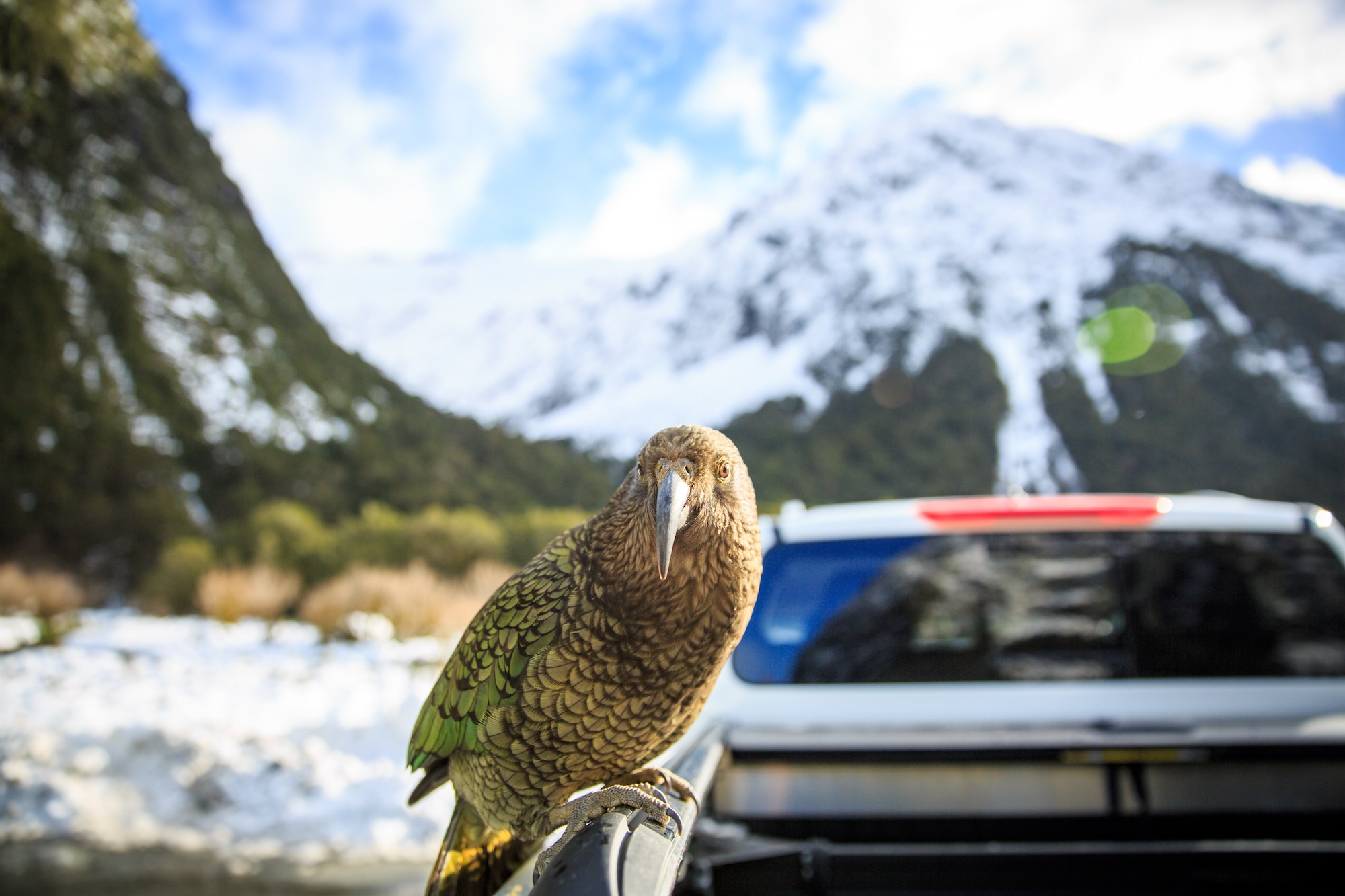
2. The alpine rock wren/pīwauwau
While most people associate the kea as New Zealand’s iconic alpine bird, the truth is they are only partly alpine as they nest in the forest. Rock wren/pīwauwau are actually New Zealand’s only true alpine bird. Ka-boom, take that, kea!
Weighing less than an AA battery, they are tiny but mighty. I have been known to waste a ton of time while tramping, waiting around, and looking for rock wren when I’m in the mountains. Just last summer, I made an epic mistake by spending two hours watching the rock wren on the Gillespie Pass, meaning I had to finish the tramp in the dark in a forest where the trail was basically invisible. 10/10 do not recommend. But hey, it’s pretty cool there are rock wren up there! I’ve also seen them a few times while tramping in Fiordland.
Rock wren are in serious trouble. Stoats love them, and climate change will impact them too. When serious predator control efforts exist, about 85% of nests are successful. Without predator control, nests almost always fail.
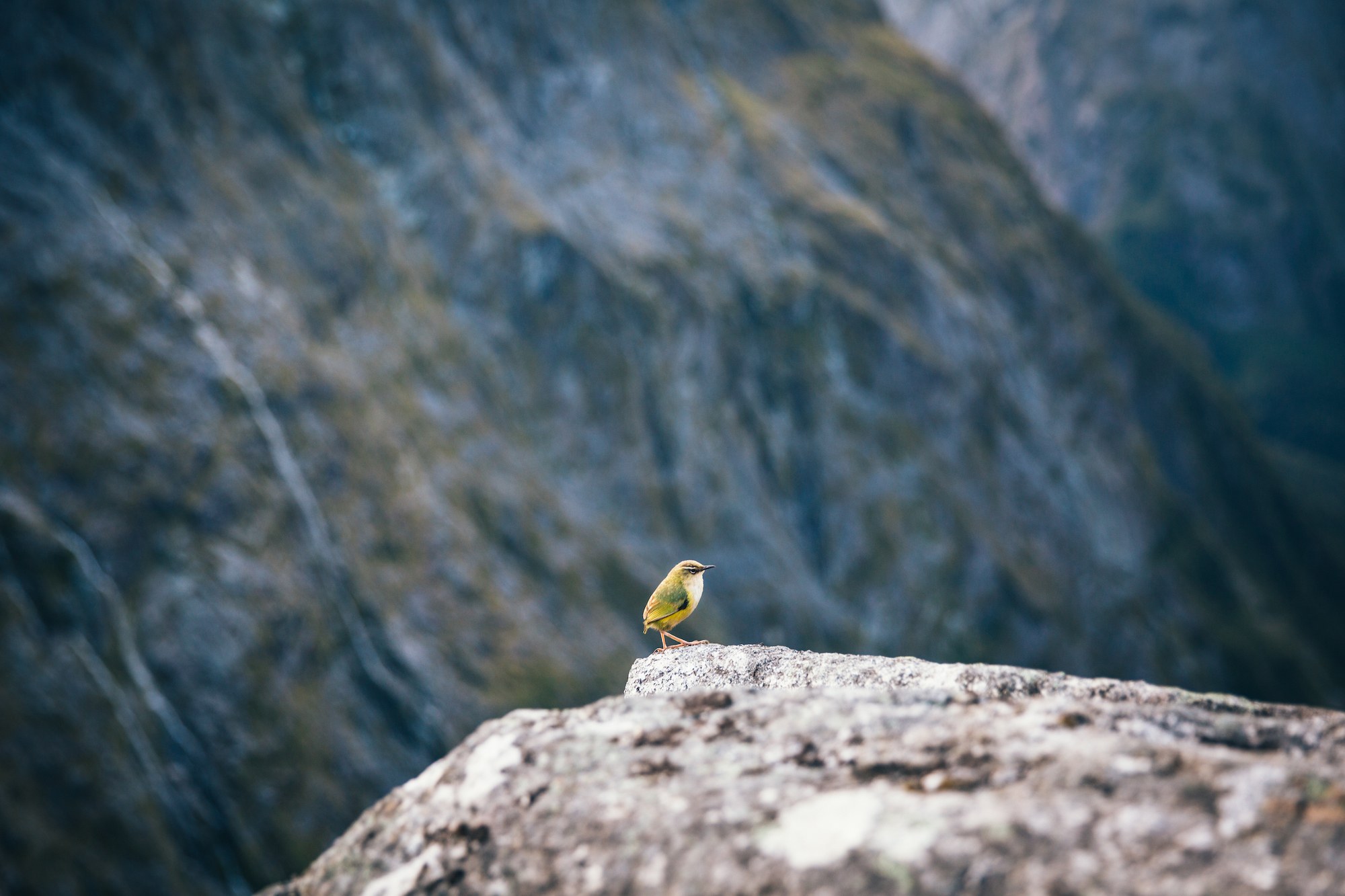
3. The quirky weka
If I had a dollar for all the times that tourists have told me they were so lucky and saw 20 kiwi in Fiordland who came right up to them, I would probably have around $20. Striking a balance between bursting their bubble and keeping them happy, I find myself kindly explaining that it was definitely not kiwi; instead, it was probably the weka.
If anyone sees 2o curious kiwi during the daylight that come right up to you, please let me know because that doesn’t happen, haha. Kiwi are rare, elusive, shy, solitary, and, most importantly, nocturnal. Weka? You see them all over the place, especially in Fiordland. They’re so abundant they eat them on the Chatham Islands.
Weka tend not to get a lot of love. They come across as weird, scavenger-esque, and often even a total pain, especially for conservation workers. They are predatory with other native species (even though they are also threatened and declining), so they’re often not welcome on predator-free islands.
Weka poop their own weight in a day, which earns them respect, in my opinion!
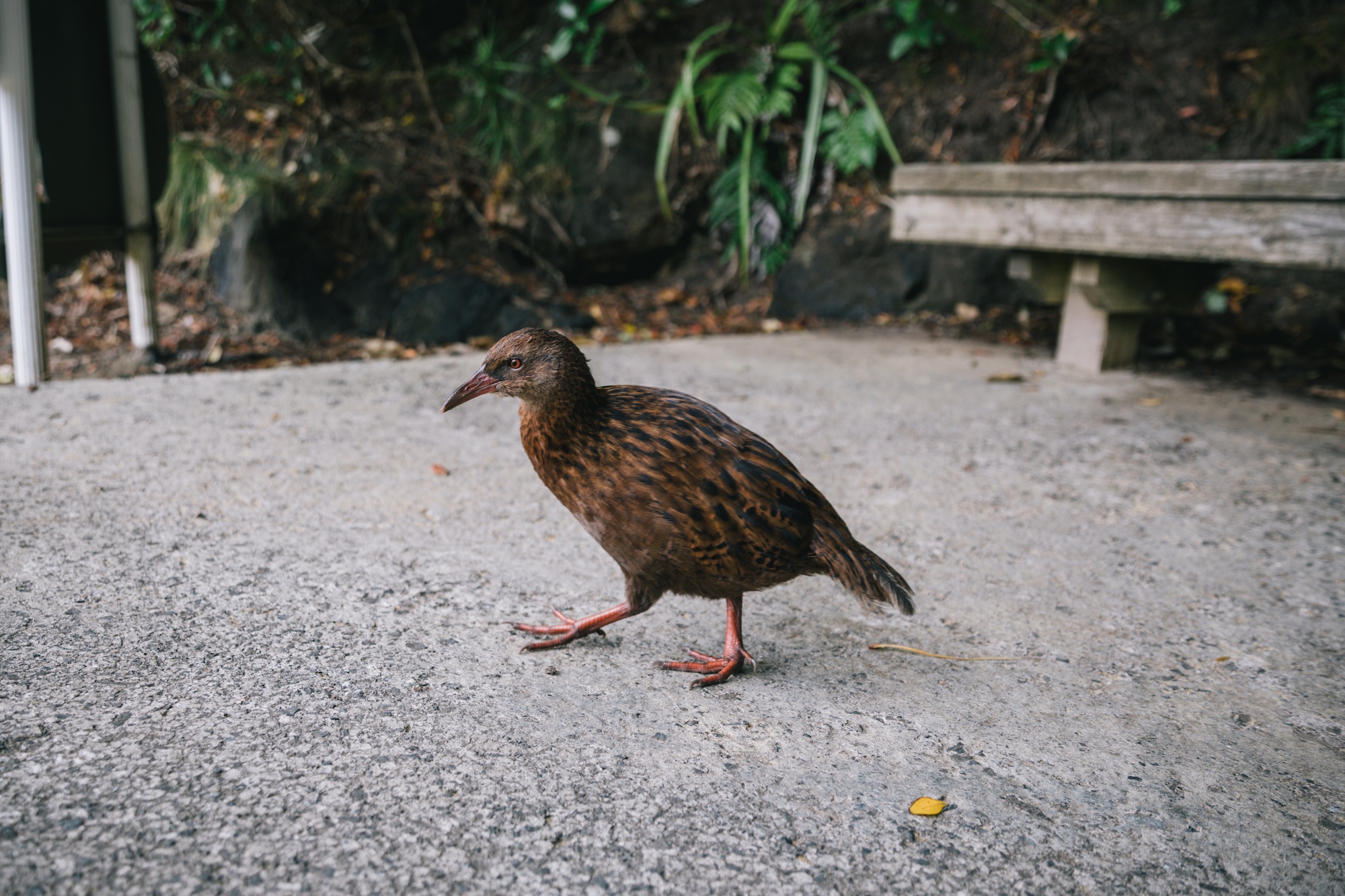
4. The takahē: the bird that came back from the dead
Takahē have long been one of my favorite bird success stories in New Zealand. Declared extinct after not being spotted for 50 years, takahē were rediscovered in 1948, hidden deep in Fiordland’s Murchison Mountains.
Takahē are New Zealand’s largest flightless bird, with mammals being the biggest threat to their survival. In 2007, a stoat plague halved the takahē population in the Murchison Mountains, and nowadays, there are about 400 birds. Another wonderful yet weird poo fact is that the takahē can poo up to 9 meters a day.
While it’s harder to see them in the wild because their populations are protected, you can see takahē in many sanctuaries around the country. These large blue flightless birds give us all hope for other species. For example, the South Island kōkako was listed as extinct until 2013 when DOC reclassified its status as ‘data deficient,’ with many people recording sightings and songs of the bird as the hunt continues to find them.
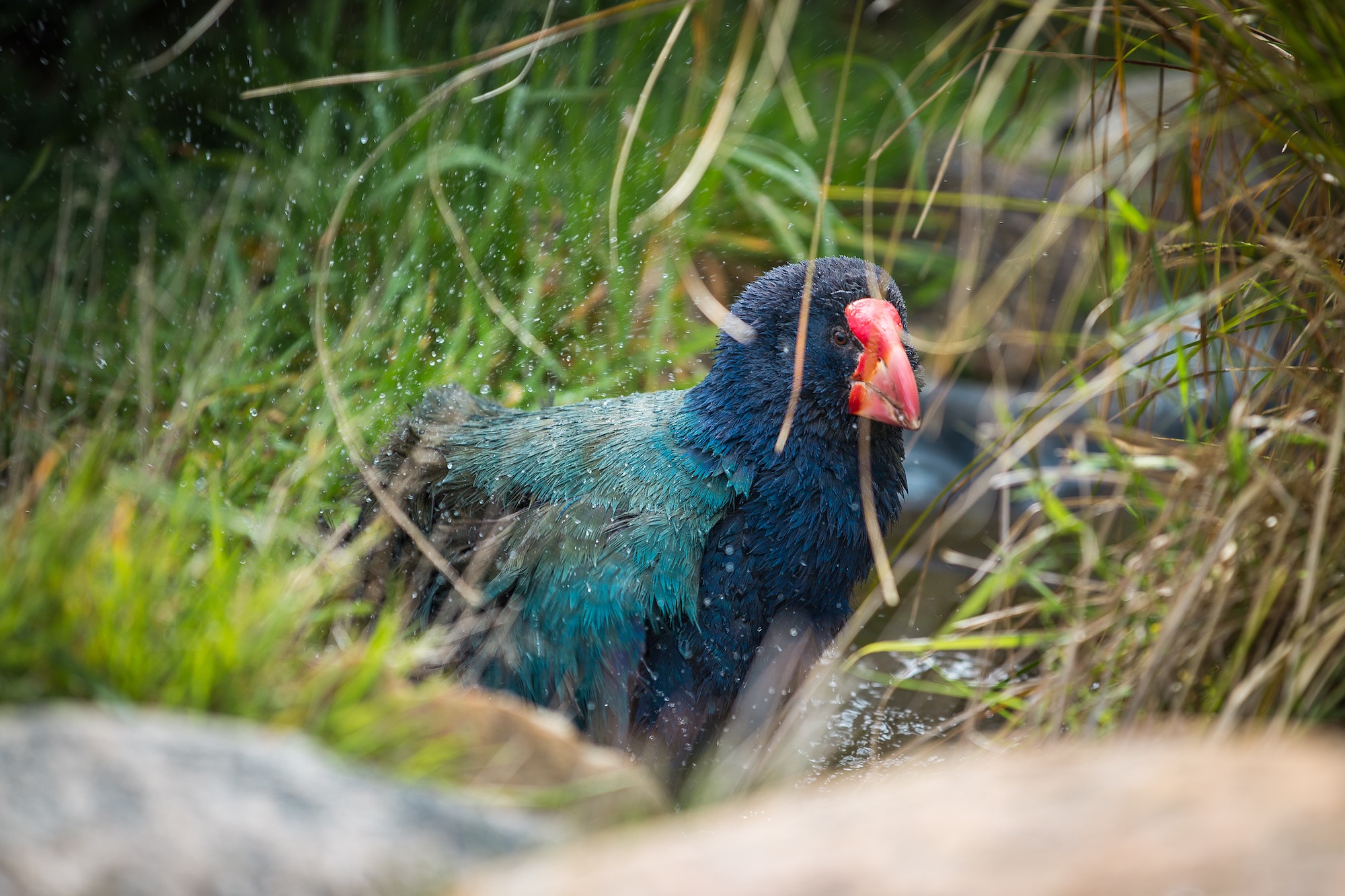
5. The most expressive tawaki/Fiordland crested penguin
The Fiordland crested penguin/tawaki is the only penguin in the world to live deep in the rainforest here in New Zealand. With their jaunty, bushy yellow eyebrow feathers, they are very rare, with the current tawaki population sitting between 2,500 and 3,000 breeding pairs.
For the past 70 years, they have been in decline, so seeing these guys in the wild makes it all the more special.
Doubtful Sound is one of the places where I’ve regularly seen tawaki. On the Doubtful Sound overnight cruises with RealNZ, you have a better chance of seeing them at dawn or dusk they go/return from the sea. The best time of year to see tawaki is during the breeding season, from July to November.
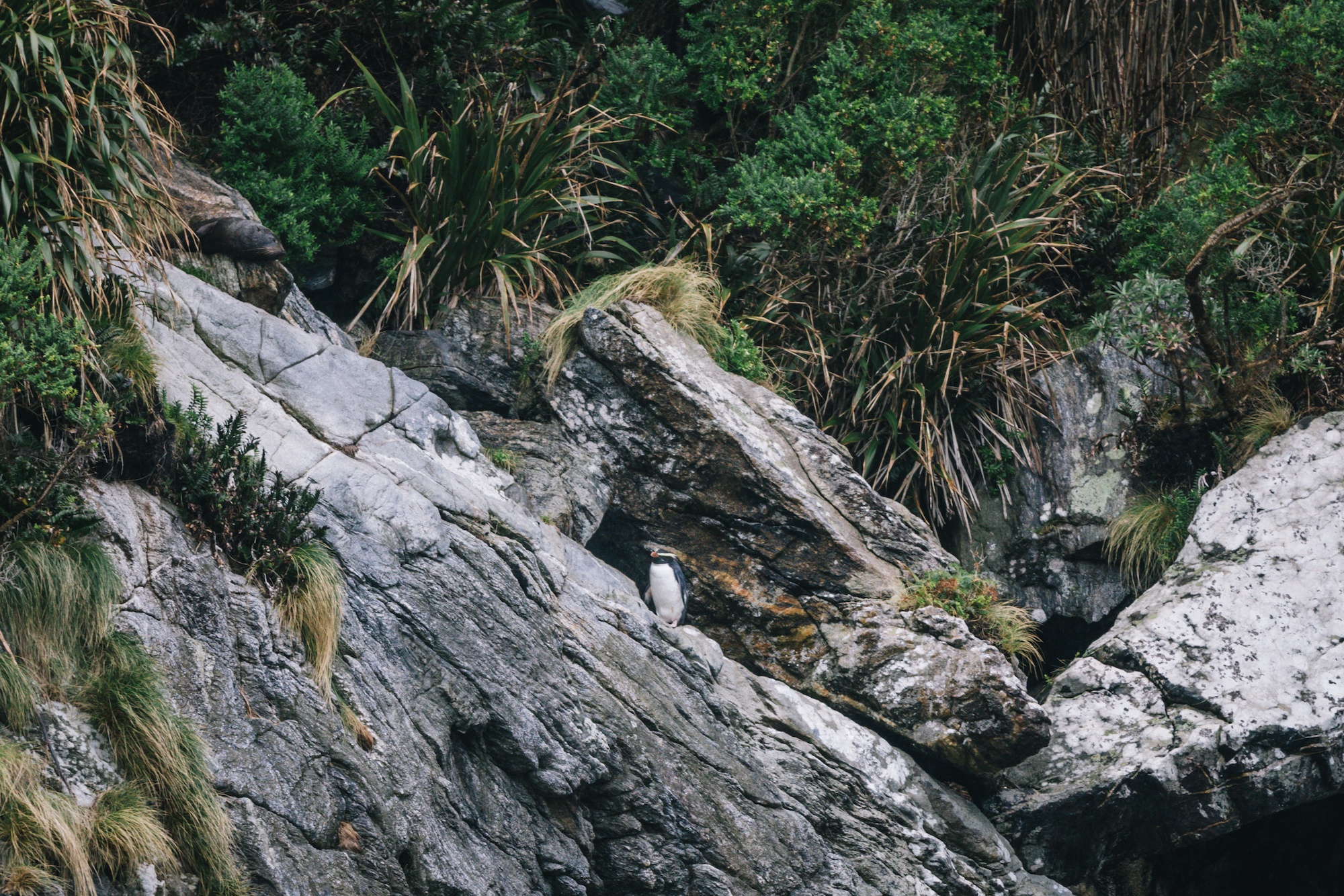
6. The white-water rafting blue duck – the whio
Did you know our endemic duck here in New Zealand doesn’t quack? The whio/blue duck is very rare, with only 3,000 left; the males whistle while the females growl. Also, a good reminder that the ‘wh’ in ‘whio’ is pronounced as an ‘f.’ Fee-oh. Say it with me, fee-oh.
The white water rafting duck, whio need clear, fast-flowing rivers to thrive. You’ll also spot them on the 10-dollar note here. Whio Forever helps look after these South Island birds in a partnership between Genesis Energy and DOC. RealNZ also contributes towards Whio Recovery as part of its conservation initiatives.
While the kea tend to get all the attention on the Milford Road, I’ve spotted many whio there too, as well as around Fiordland.
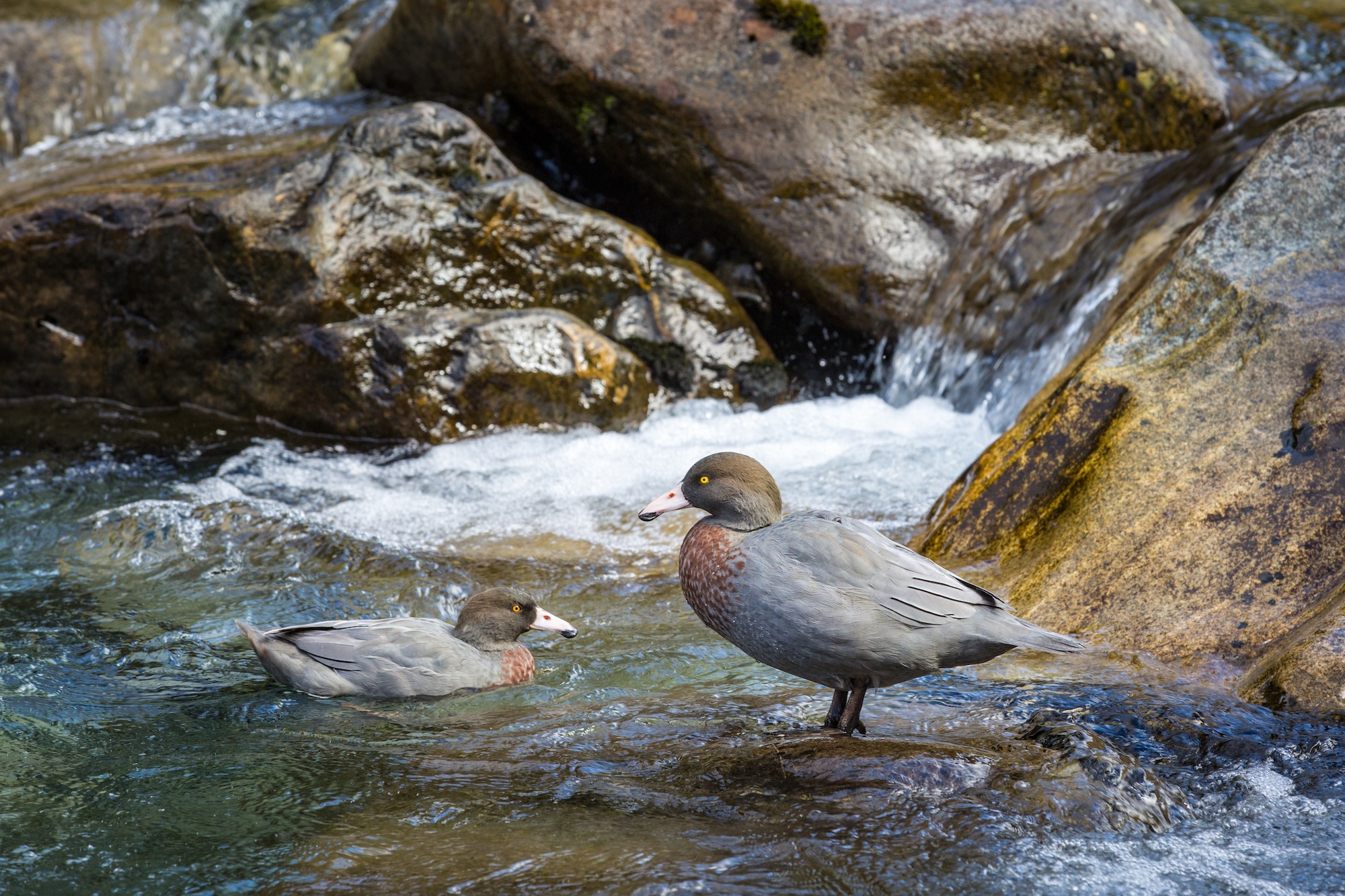
7. The cute little $100 mohua/yellowhead
So many of our flashier, bigger South Island birds get all the attention here in New Zealand, and it’s easy to forget about the little guys. The mohua/yellowhead is a small, insect-eating bird that lives only in the forests of New Zealand’s South Island. Mohua are rare and declining; in fact, there are less than 5,000 mohua left.
Nowadays, you can find mohua gracing our $100 note here in New Zealand.
Early settlers called it the ‘bush canary’ because of its color and beautiful song. You can find mohua in pockets around the South Island, including Fiordland. They’re a bird you kinda have to be on the hunt to find. I’ve seen them the most in Fiordland, around Dusky Sound, where there is a lot of predator control. In partnership with DOC, RealNZ runs some serious predator control efforts around Dusky Sound, including the ambitious Cooper Island Restoration Project.
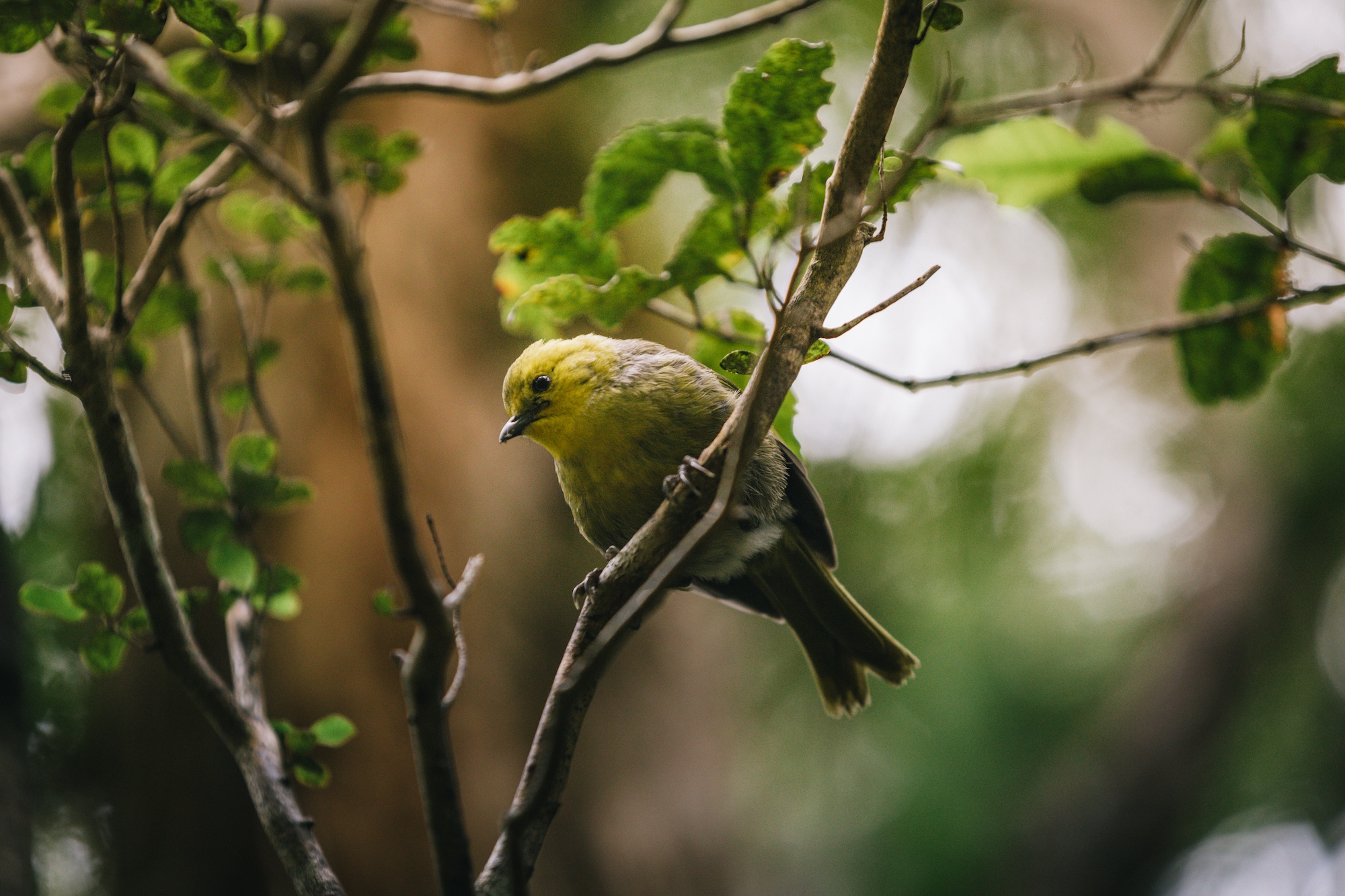
8. The other noisy and loveable parrot – the kākā
The forest-dwelling cousin of the kea is the kākā, beautiful brown, red, and yellow colored parrots that are making a real comeback across most of New Zealand; even if you don’t see them, you can hear them chattering and shrieking away in the treetops.
Like many of our other South Island birds, they are still at risk from predators, but also habitat loss – kākā need a lot of forest to thrive.
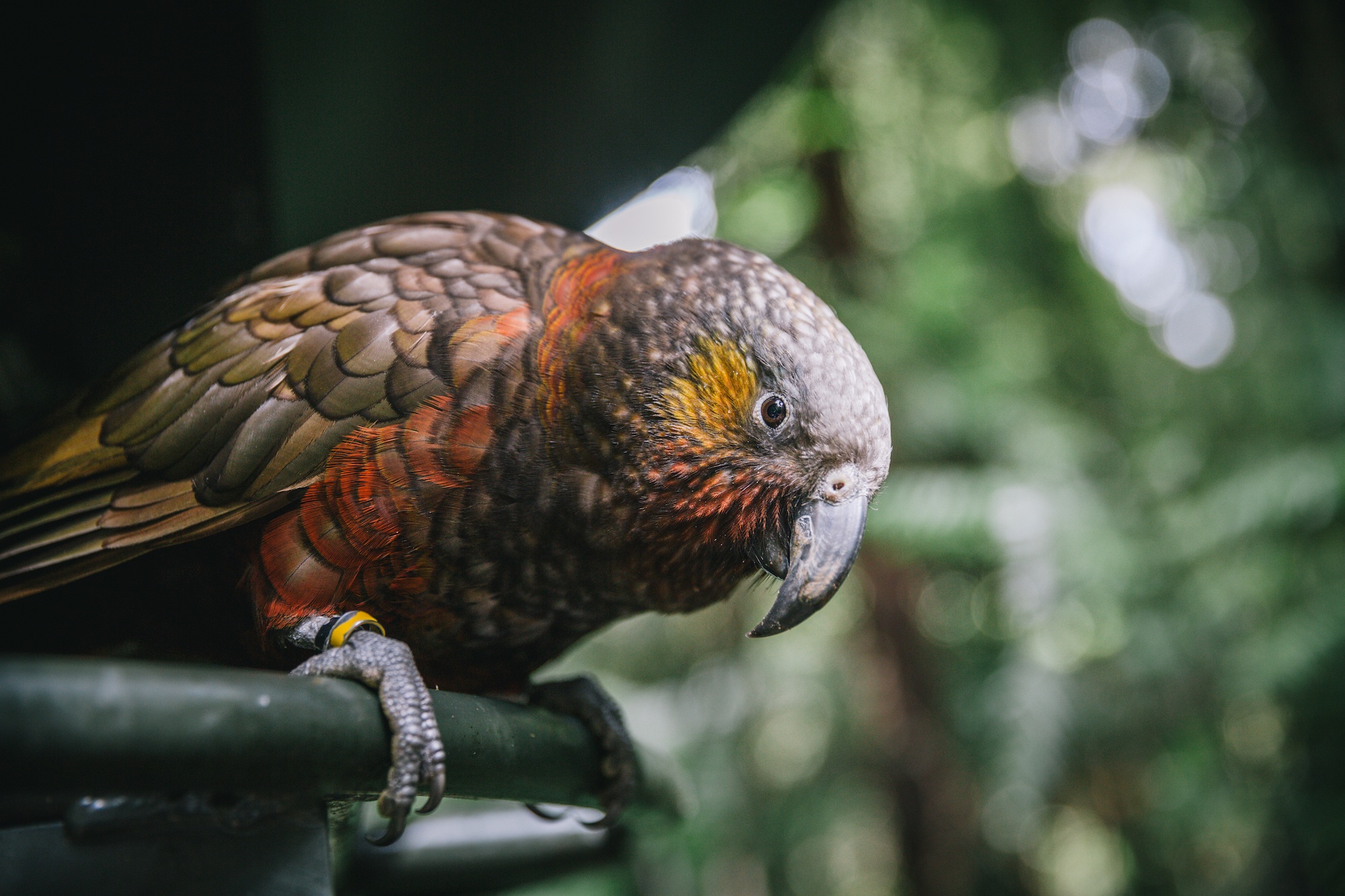
9. The iconic kiwi/tokoeka, our national treasure
The kiwi definitely is one of the world’s weirdest birds. Unique, curious, and nocturnal, kiwi cannot fly, and they have loose, hair-like feathers. There are five species of kiwi across New Zealand, with less than 70,000 left. Down south here, we have the tokoeka kiwi, which literally means ‘weka with a walking stick.’ And there are three genetically distinct forms of the tokoeka kiwi: Haast, Fiordland, and Rakiura (Stewart Island).
Your best chance of seeing kiwi in the wild is on Rakiura. Realnz’s Chief Conservation Officer, Paul Norris, is also chair of Predator-Free Rakiura, whose goal is to rid Rakiura of introduced predators to help more than 20 threatened species. RealNZ works hard to support this campaign.
Nationwide, approximately 20% of the kiwi population is under management. In areas with predator control, 50-60% of chicks survive. Without predator control, 95% of kiwi die before reaching breeding age.

10. The beloved, drunken kererū
New Zealand’s pigeon, the kererū, is a large, beautifully green, bronze, and white bird you can often see around the country. With a tiny head, you can always hear the woosh-woosh sound it makes as it takes flight in the forest.
But perhaps what kererū are most known for is that they occasionally get drunk on fermented berries and fall out of trees. And not just one, either.
Population-wise, they’re doing ok, though the kererū is declining in areas with no predator control.
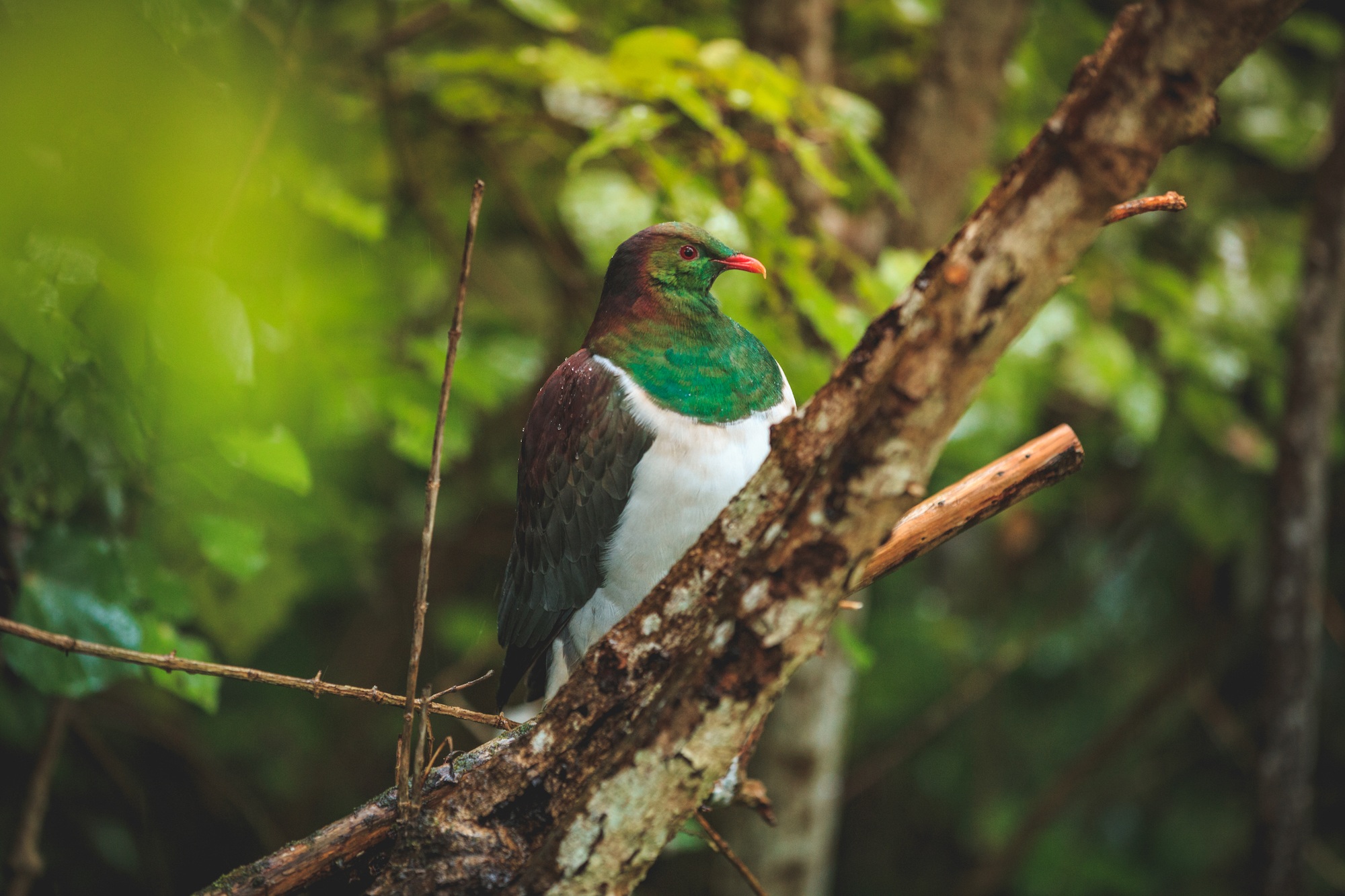
11. The musical bellbird/korimako, with its haunting songs
When I lived in Dublin Bay in Wānaka, a bellbird/korimako lived in the big tree outside my balcony. At sunset, he would begin singing. I have such beautiful memories of it, and whenever I hear the call of the bellbird in the forest, I remember that chapter of my life.
The song of the bellbird is probably the most easily recognizable call here in New Zealand.
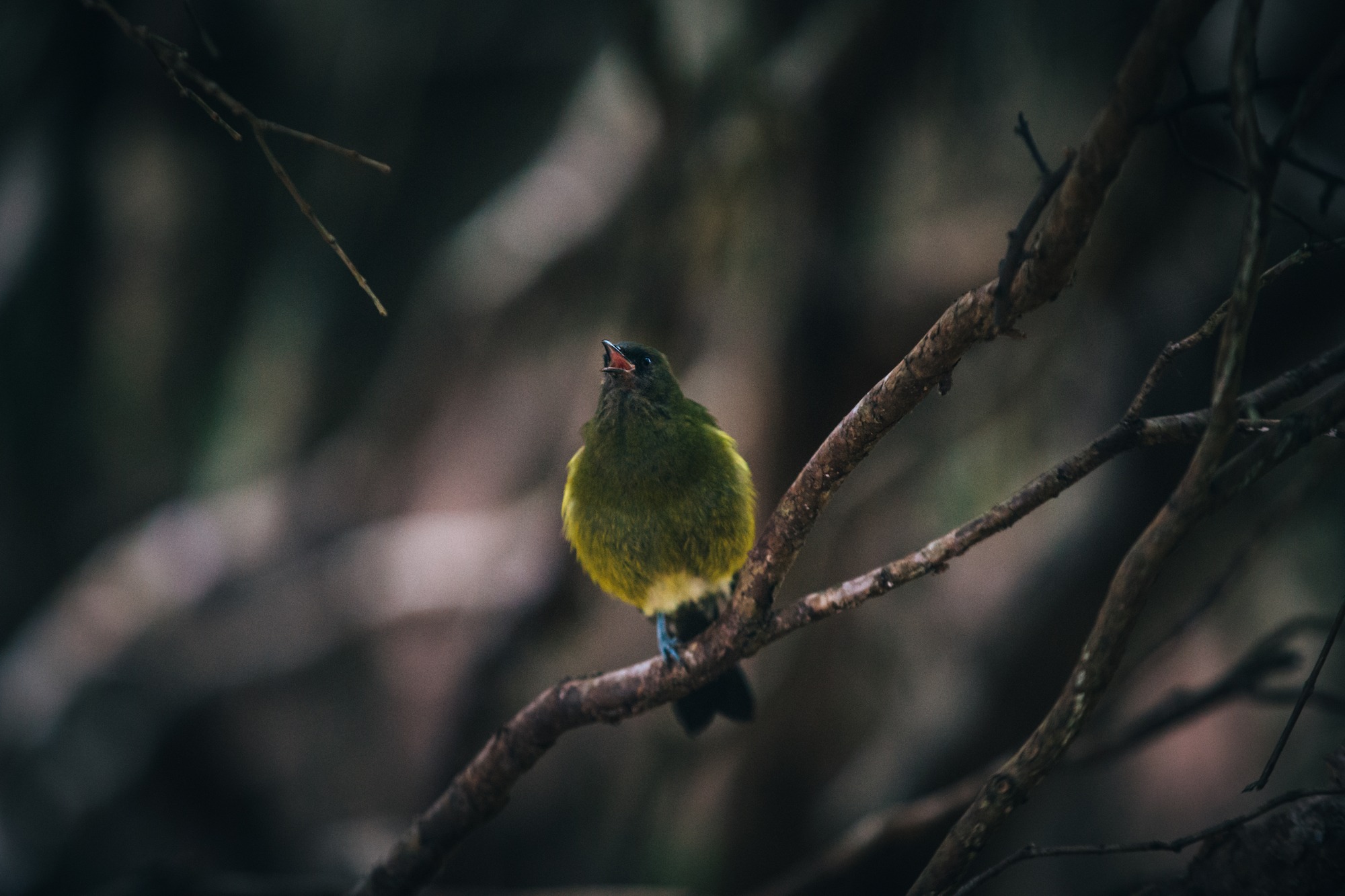
12. The boisterous little fantail/pīwakawaka
Known for its iconic ‘cheet cheet’ song and energetic flying antics bopping around all over the forest, the fantail/pīwakawaka is one of the most common native birds here in New Zealand. Because they have many chicks, fantails have fared relatively well with the incursion of mammal predators. You might even see a solid black fantail if you’re lucky.
In Māori stories, the fantail was responsible for bringing news of death. It’s terrible luck to see a fantail in a house.
Maui (the trickster demi-god), thinking he could eradicate death by successfully passing through the goddess of death, Hine-nui-te-po, tried to enter the goddess’s sleeping body through the pathway of birth. The fantail, warned by Maui to be quiet, began laughing and woke Hine-nuite-po, who killed him.
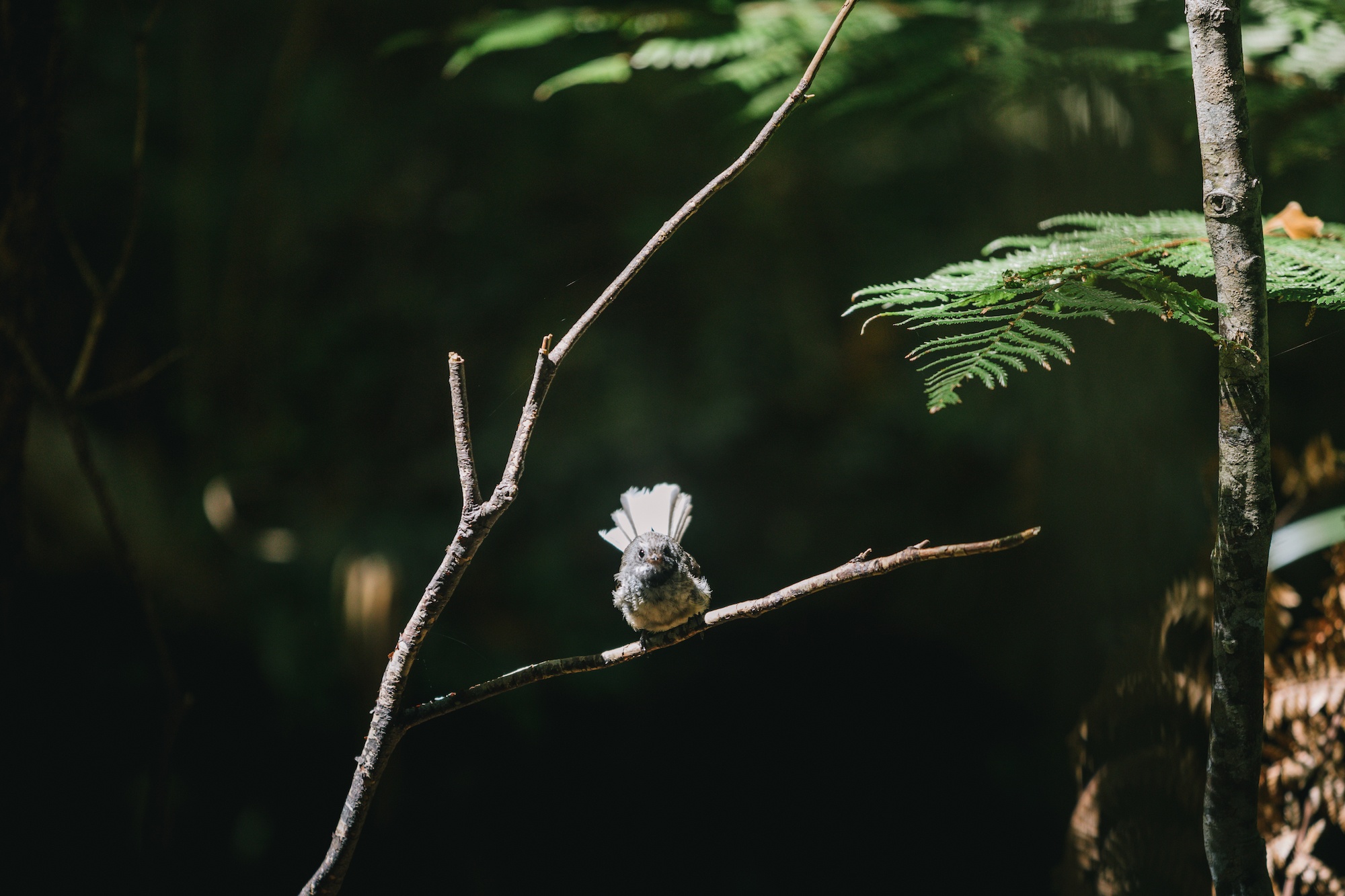
13. The crowd favorite – the tūī
It seems like everything in New Zealand is named after the tūī. Beers, brands, and even dogs are often called tūī, one of our most prolific and noisy songbirds. If you hear a song in the forest, it’s often the tūī. The tūī is excellent at mimicking sounds and calls from other birds.
With beautiful coloring and a white feather on the chest, they’re easy to spot. Sometimes they’re a bit territorial.
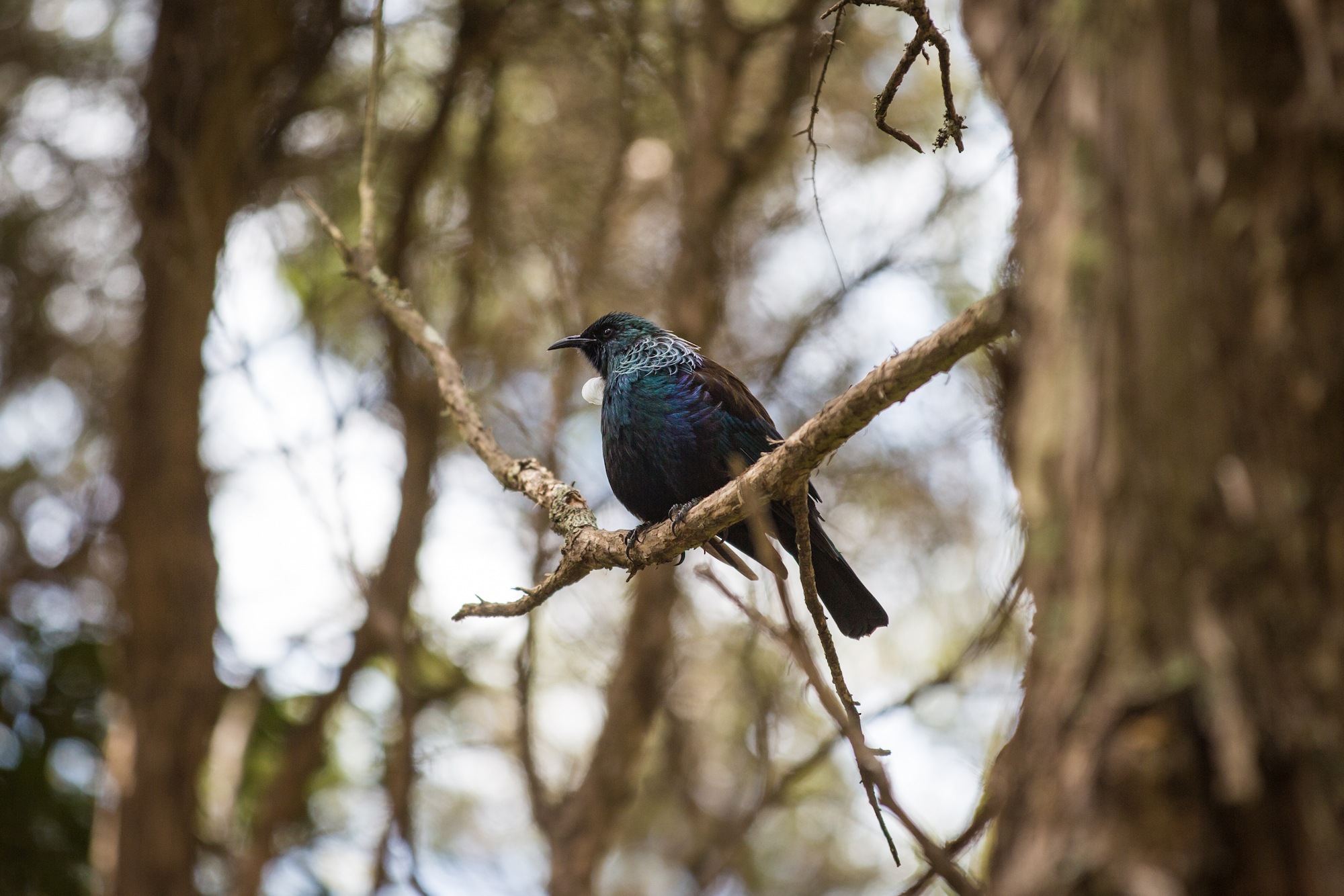
14. The friendly little South Island robin/toutouwai
The New Zealand robin/toutouwai is always one of my favorite South Island birds because they are so curious. Now that I’m into birdwatching, I often slow down while tramping and take the time to listen for calls and to soak in the place I’m exploring. Inevitably, a robin usually shows up to keep me company.
If you sit still and watch them long enough, they will often come right up to you. I’ve had them land on my cameras or perch on my boots. They like that our boots churn up the ground revealing bugs for them to munch on.
While they are declining, I often see them hiking in the national parks. There are three types: North Island robins, South Island robins, and Stewart Island robins, all of which are closely related. With their chubby round bodies perched on long spindly legs, they’re super cute to observe in the wild.
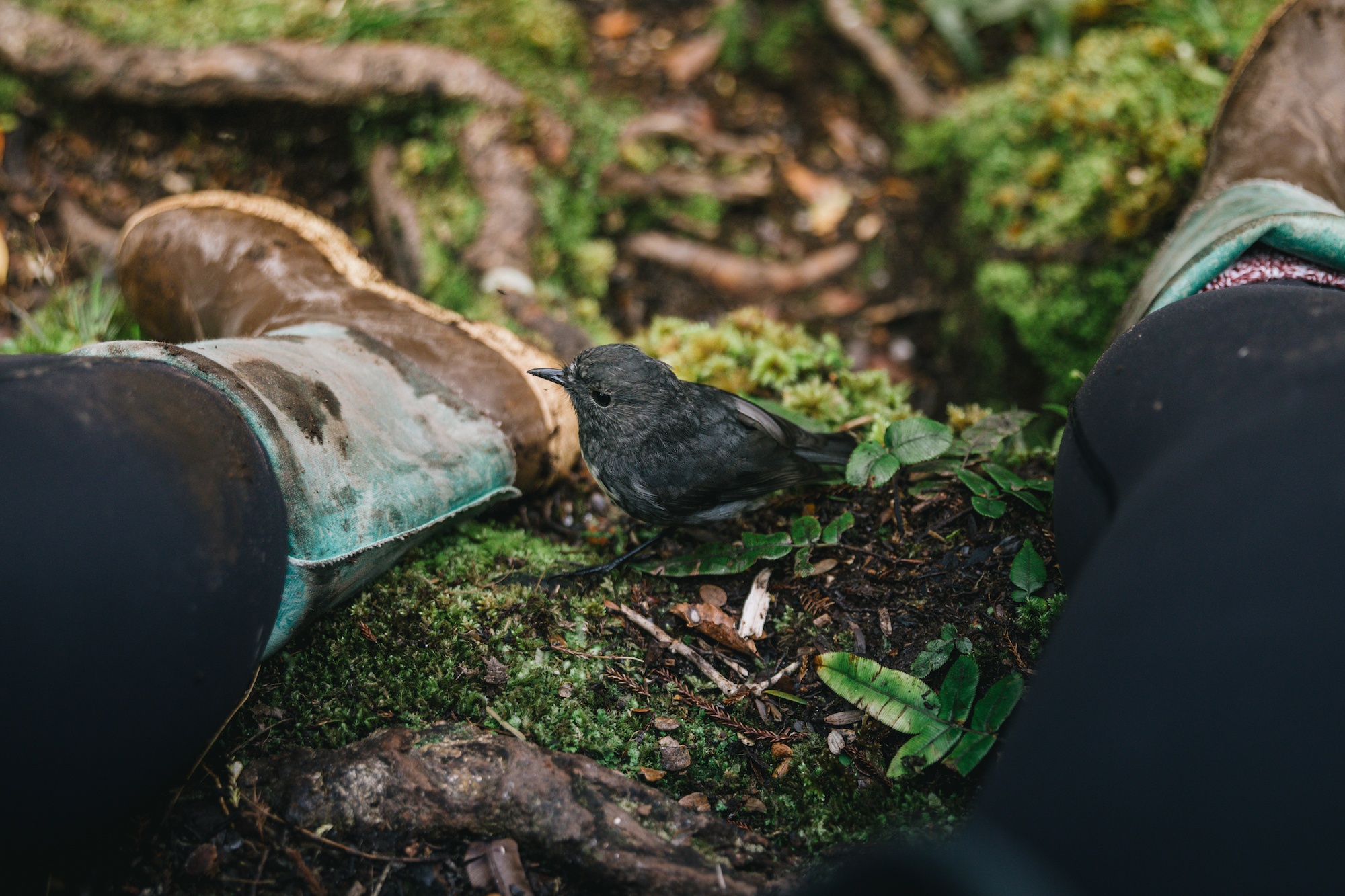
15. Our guardians and fortune tellers – the tīeke/saddleback
Sadly there are only about 700 South Island saddlebacks are left here in New Zealand; you can sometimes see them in Fiordland and on Rakiura. All these birds are descended from the survivors of the 36 saddlebacks rescued in 1964 when a boat accidentally brought rats to their remaining island refuge.
Saved from the brink of extinction, tīeke are one of the great conservation success stories, and it’s beautiful to see them in the wild.
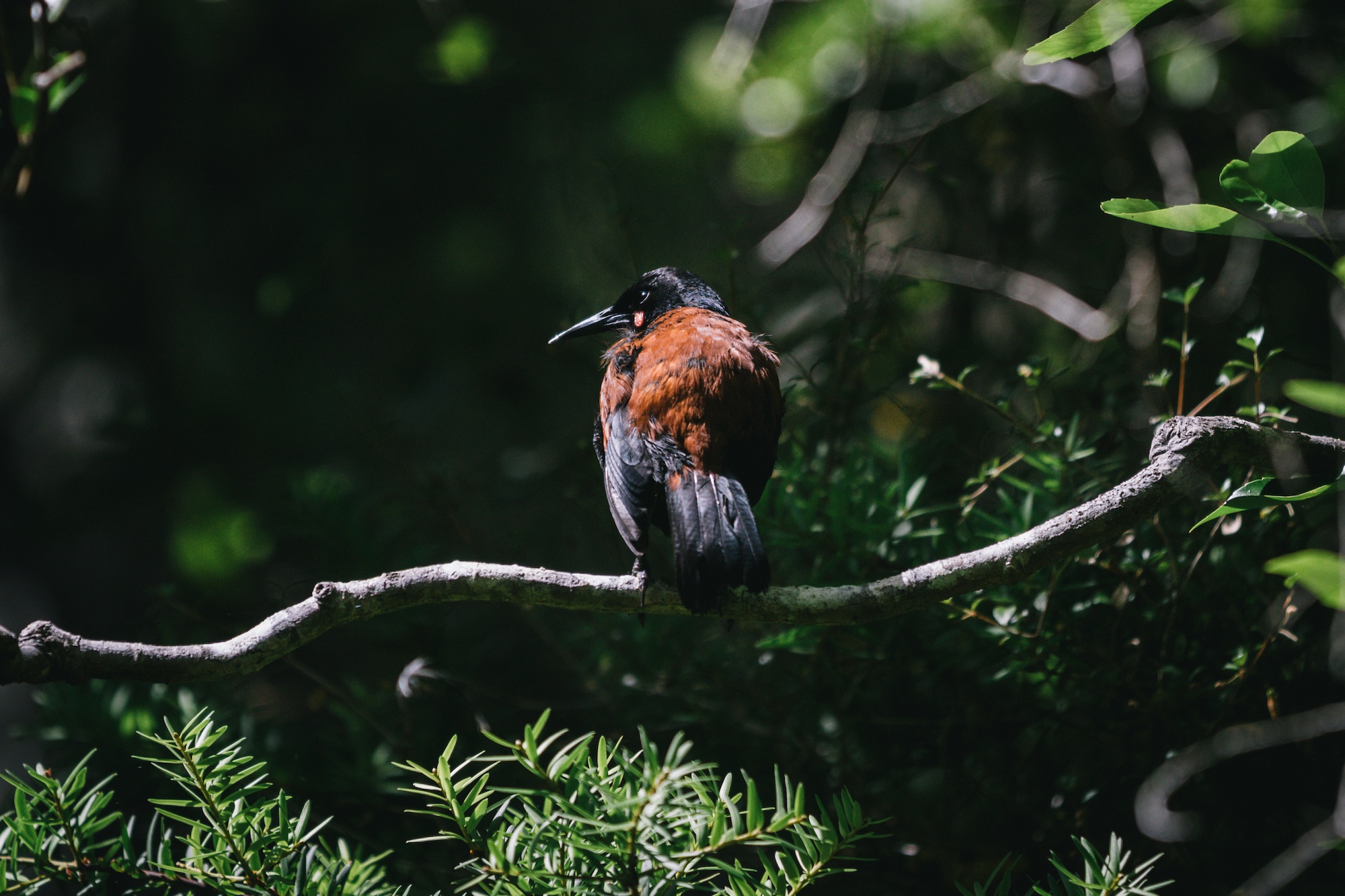
16. And my all-time favorite – the kākāpō
You guys know that I have been OBSESSED with the kākāpō since I moved to New Zealand. My absolute favorite, the kākāpō, takes the top prize for the coolest, weirdest, most interesting native bird. Nocturnal and flightless, kākāpō are the only lek-breeding parrot species in the world, and they only breed when rimu trees put out enough fruit, usually every two to four years. They are also one of the longest-lived bird species in the world, clocking in at around 90 years old and being the heaviest parrot.
The history of the kākāpō is a sad one. Once, they were the third most common bird in New Zealand. But when humans and predators arrived, they didn’t stand a chance. They were decimated, and it wasn’t until the 70s that conservation began actively looking for them again to save their species. A few were found in Fiordland, all males, and then a tiny population was found on Rakiura with females. While they don’t have much genetic diversity, the kākāpō are slowly making a comeback.
With only 248 kākāpō left in New Zealand, they all have names and are looked after by DOC and Kākāpō Recovery, who work round the clock to bring these guys back from the brink of extinction. Sadly you probably won’t see any kākāpō in New Zealand, and they live only on offshore, predator-free islands, with limited access.
I’ve been lucky enough to visit them both on Whenua Hou and Anchor Island, where RealNZ sometimes helps with trapping. I’ve even been privileged enough to meet and hold Sirocco a few times – our famous Spokesbird for Conservation. You might have seen him in that viral video with Stephen Fry and Mark Carwardine.
But if you get lucky and are here when there is a breeding season with many chicks, often Kākāpō Recovery will often have some of the hand-reared chicks on the mainland in special places where you might get the chance to see them. And we can all dream about seeing them in the wild again one day!
What South Island birds did I miss? How many have you seen? I want to hear all your stories – share!
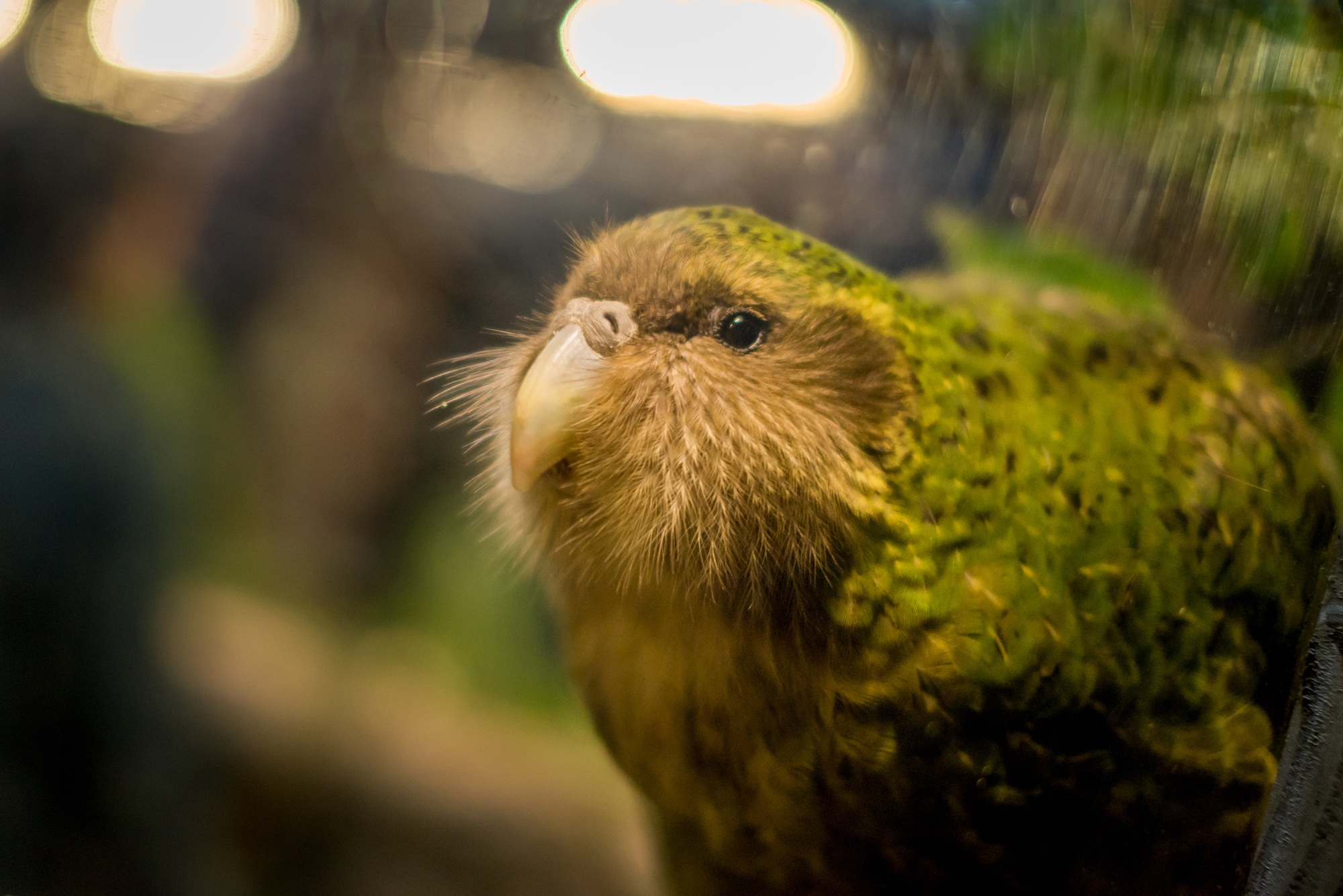
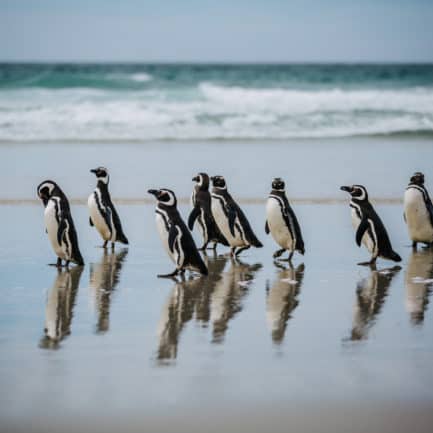
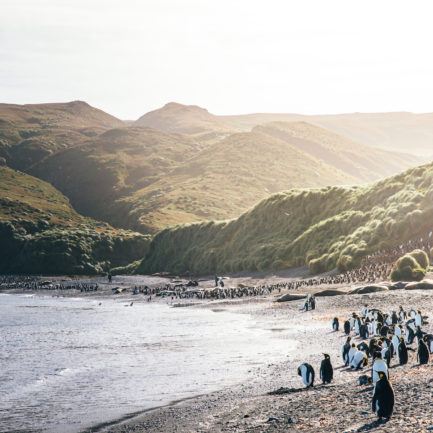
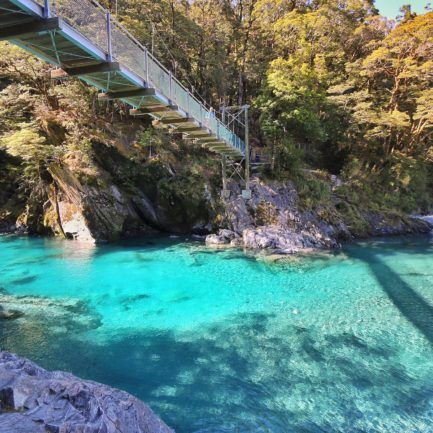
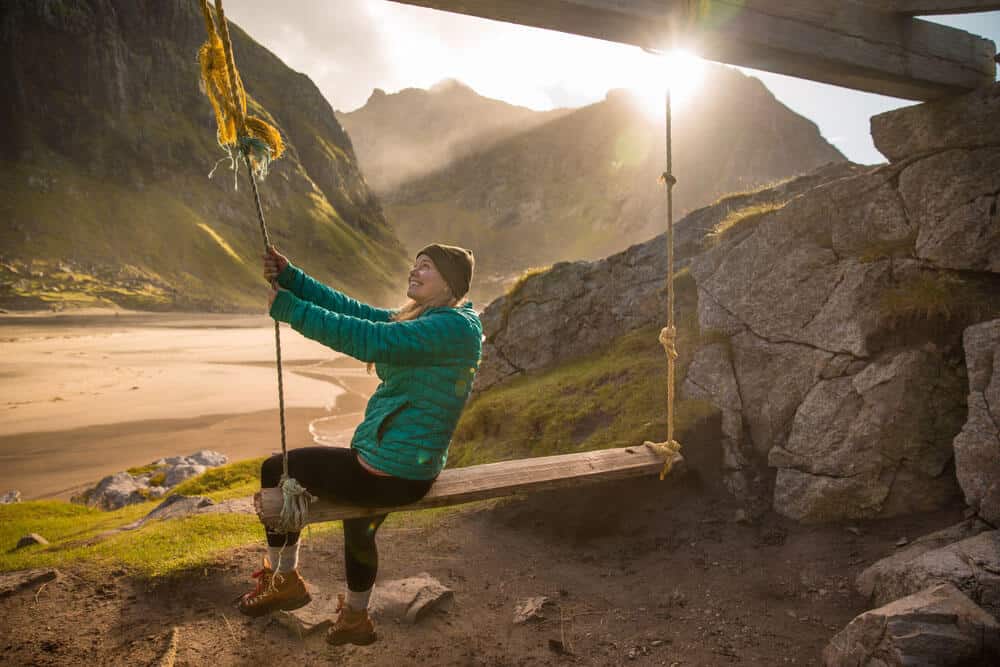
Be the first to comment